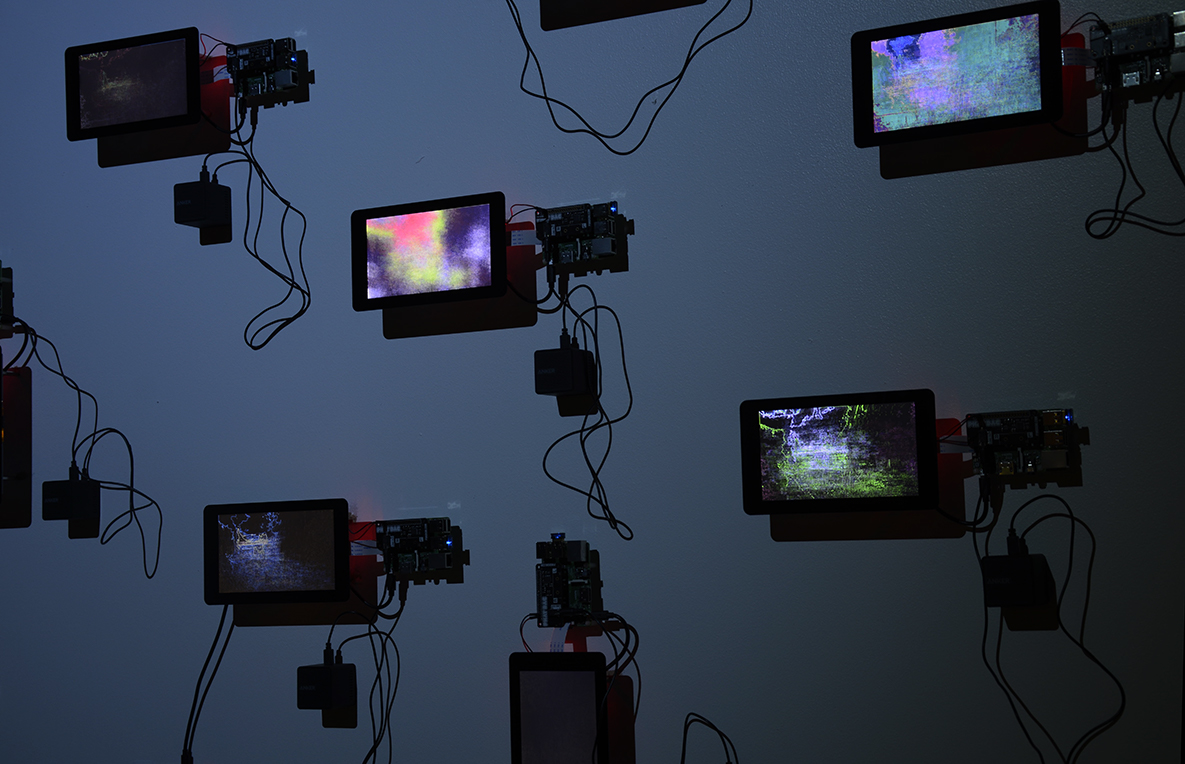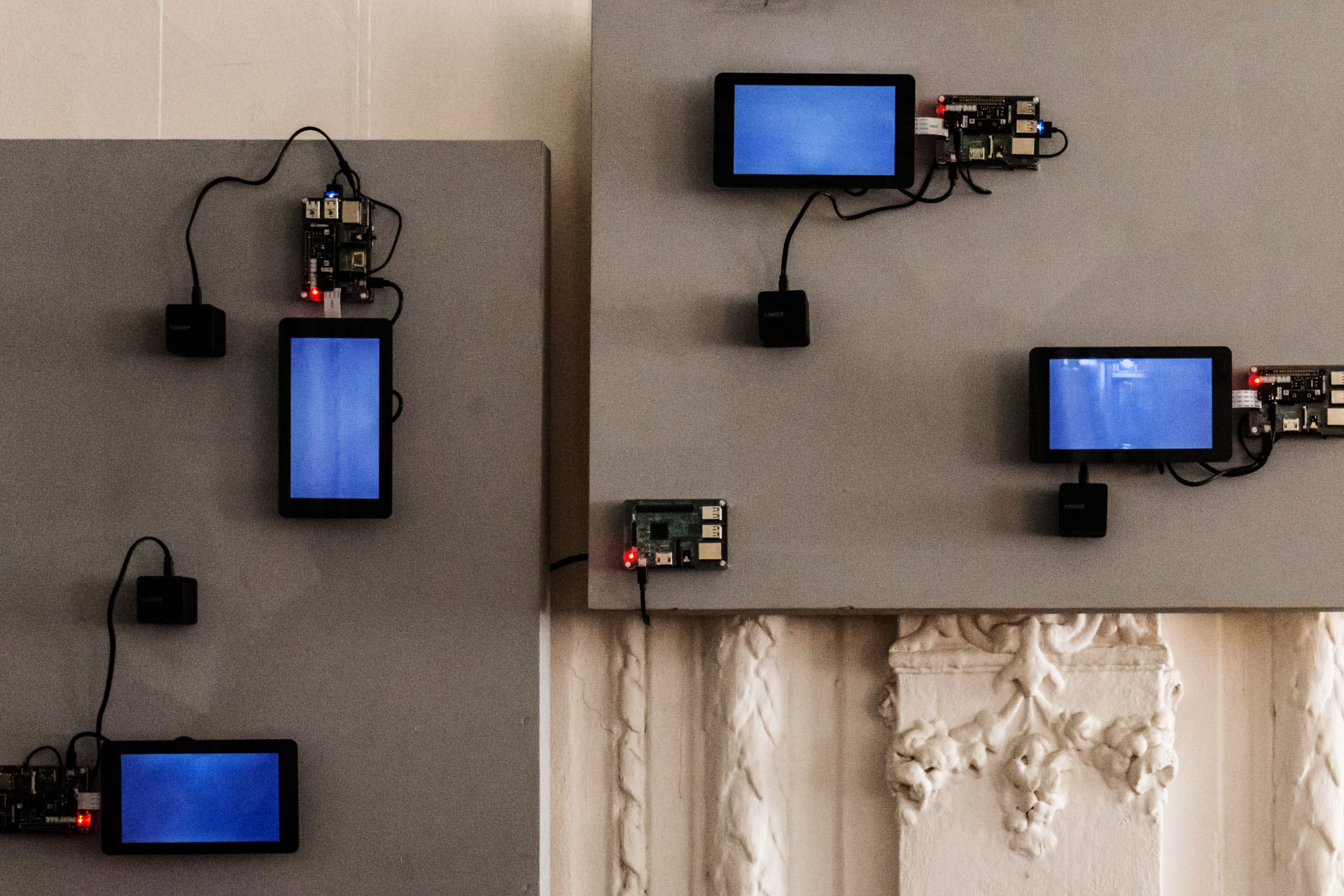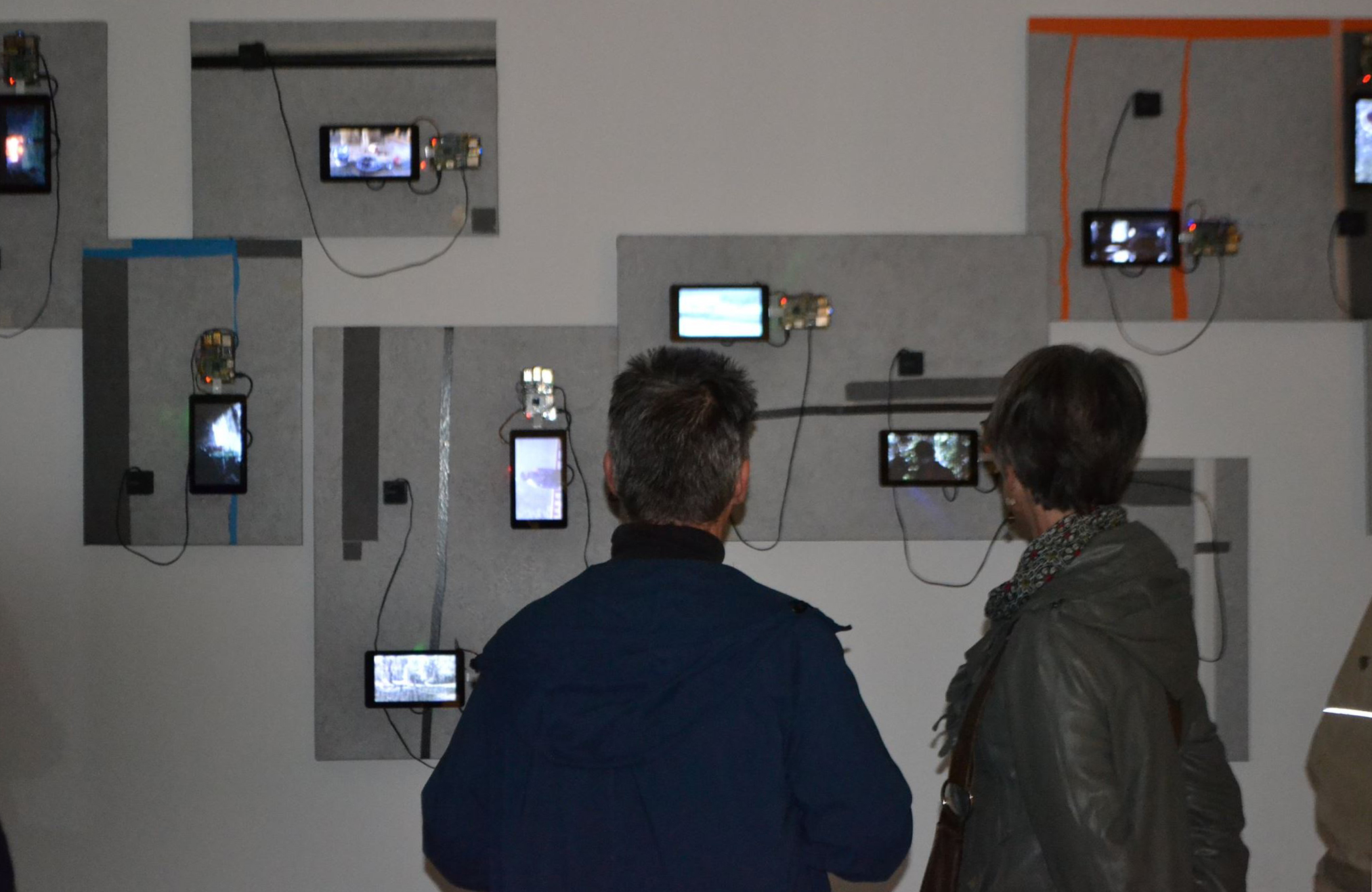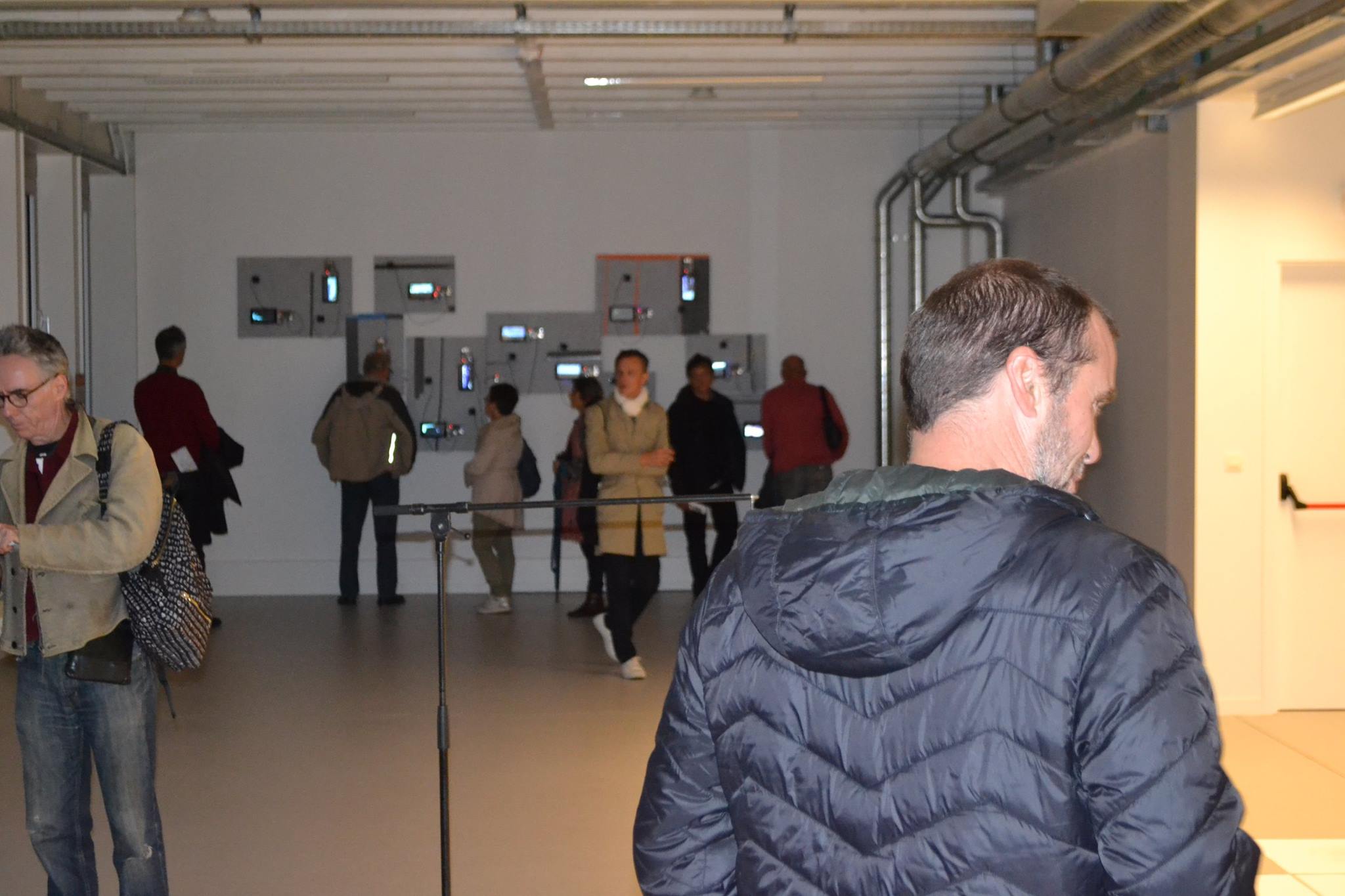Introduction
“The sounds of the world” (2016-2017) is a thirteen-channel audio-visual installation, based in a network of Raspberry Pi computers, and created from a series of Andrei Tarkovsky film clips.
Each Raspberry Pi computer is connected to a screen and speaker. All these components are distributed, and assembled in one or several board canvas, which are hanged from the wall.

Phoenix Gallery, September 2016, Leicester, UK
The installation can be labelled as visual-music installation, where sound and images have the same importance, and a network of Raspberry Pi computers displays synchronously thirteen audio-visuals.
Very briefly, each Raspberry Pi computer, screen, and speaker set can be considered as an “audio-visual musician”. Each musician has his own “audio-visual score”, which is played synchronously with the other musician scores. The whole setting forms an “audio-visual orchestra”.
The concept
Regarding the audio-visual material, the installation explores the concept of audio-visual sampling, in which real-world images and sounds are cut, mixed, manipulated and reassembled in order to generate new audio-visual materials.
In my works I experimenting with how audio-visual sampling, granular sound synthesis techniques and pseudorandom number generator algorithms can be used for generating multichannel audio-visual creative works.
In particular, this installation is based on a series of Andrei Tarkovsky film clips. Over 500 very short Tarkovsky film clips are cut, mixed, manipulated and reassembled generating a new multichannel audio-visual piece.
The name of the installation is taken from this quote by Andrei Tarkovsky, who wrote in ‘Sculpting in Time’: “I feel that the sounds of this world are so beautiful in themselves that if only we could learn to listen to them properly, cinema would have no need of music at all.”

Taiga Creative Space – 10th CYFEST , February 2017, St. Petersburg, Russia
Installation software
The installation software is mainly based on free software.
On the one hand, the computers operating systems are based in Linux, and the audio-visual materials have been generated using programs developed in Processing.
On the other hand, the software that allows configure and synchronise the network of Raspberry Pi computers is also based in Linux and Processing.
Installation hardware
The installation is based in:
14 Raspberry Pi computers
13 Screens 7”
13 Speakers
All these components (computers, screens, and speakers) are distributed and assembled in 9 foam board canvas, and hanged from the wall. The dimensions of the canvas are:
4 canvas of 80 x 60 cm
5 canvas of 60 x 40 cm

City Sonic 15 – International Sound Art Festival, September 2017, Charleroi, BE
The space
The installation must be placed in a wall, and occupies an area of 4.5 x 1.8 metres. The space size must be, at least, 6 x 6 meters. The room should have dim light for the visuals, and must be quiet for the sound.

City Sonic #15 – International Sound Art Festival, September 2017, Charleroi, BE
Technical requirements
The installation includes all necessary elements, and the organizer should just provide one electricity socket in order to connect the whole installation.
Media